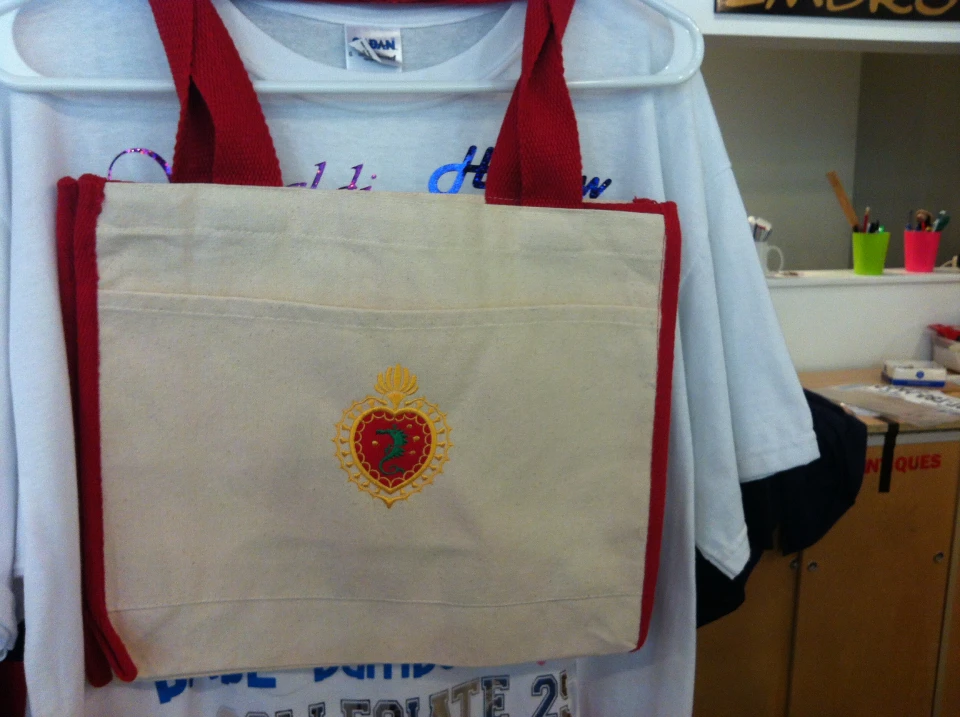Personalized Scrubs with Embroidery for a Specialist Look
Personalized Scrubs with Embroidery for a Specialist Look
Blog Article
The Art of Personalized Needlework: Opening the Tricks to Creating Unique and Remarkable Styles
The secrets to producing personalized embroidery styles that astound the eye and leave a lasting perception lie in a fragile equilibrium of method, imagination, and attention to information. As we delve into the globe of personalized embroidery, we discover the nuanced interaction in between string option, stitch intricacy, and style personalization that boosts a mere garment to a work of art.
Picking the Right Needlework Threads
When picking embroidery threads, what crucial variables should you think about to make certain the ideal outcomes for your custom-made styles? The choice of embroidery string is critical in establishing the final end result of your embroidered style. One of the primary factors to consider is the product of the string. Different products such as cotton, polyester, rayon, and silk offer varying degrees of sheen, durability, and appearance. It is necessary to pick a string material that enhances the textile you are stitching on and aligns with the desired look of the design.
Thicker threads can include dimension and texture to your design, while finer strings are ideal for intricate information and tiny message. Furthermore, thinking about the color fastness and washability of the thread is crucial to make sure that your custom styles maintain their quality and vibrancy over time.
Discovering Various Stitch Methods
To look into the world of 'Checking out Different Stitch Techniques', one need to grasp the intricacies and subtleties that each sewing method gives the art of needlework. Different stitch strategies not just add visual rate of interest yet also add to the overall structure and measurement of the design. One preferred stitch method is the satin stitch, which involves very closely jam-packed parallel stitches to create a smooth and glossy surface, ideal for filling out forms and developing vibrant outlines.
On the various other hand, the backstitch is a flexible technique usually utilized for outlining and including fine information. It entails sewing in reverse to produce a strong line of embroidery. In addition, the French knot stitch adds a responsive element to styles, perfect for producing distinctive accents like flower facilities or decorative touches.
Checking out various stitch techniques permits embroiderers to have fun with light, shadow, and deepness within their designs, boosting the visual charm and artistic top quality of their embroidery jobs. By understanding different sewing approaches, one can open limitless possibilities for developing one-of-a-kind and remarkable custom-made needlework pieces.
Incorporating Personalized Style Aspects
Having explored the details of various stitch strategies such as the satin stitch, backstitch, and French knot, the focus currently moves in the direction of incorporating customized design components in custom-made embroidery jobs. Personalized style elements play an essential role in making needlework tasks truly distinct and unforgettable. One method to include personalization is by including initials, names, or considerable days to the design. This not just includes a customized touch but also improves the sentimental value of the needlework sites item.
One more method to incorporate individualized layout elements is by including signs or themes that hold unique significance to the recipient or show their rate of interests and character. Integrating a favored blossom, animal, or hobby-related sign can make the needlework style much more purposeful and individualized. Furthermore, choosing shades that resonate with the recipient or straighten with the designated motif can additionally enhance the customization of the embroidery project.
Grasping the Art of Color Control
One key element of shade sychronisation is recognizing shade concept. This includes knowing just how various colors engage with each various other, the emotions they communicate, and just how they can be combined to produce aesthetically appealing styles. By using shade theory principles, embroiderers can produce harmonious shade palettes that improve the general look of the layout.
In addition, taking note of contrast is essential in shade sychronisation. Utilizing contrasting shades can help particular elements of the style pop, enhance legibility, and create a visually dynamic needlework item. By understanding the art of shade control, embroiderers can elevate their layouts and create remarkable items that reverberate with customers and viewers alike.
Enhancing Structure With Advanced Embroidery Stitches

French knots, as an example, are ideal for including tiny, raised dots to your design, imitating the appearance of grains or developing a distinctive surface. Bullion knots, on the various other hand, can be used to create twisted, ropelike elements that include an extravagant feeling to the needlework. Seed sewing includes small, scattered stitches that can fill out areas with a polychromatic structure, while turkey job develops fluffy, dimensional accents article source evocative animal fur or foliage. Explore these innovative needlework stitches permits you to push the limits of typical needlework and create genuinely distinct and aesthetically appealing textures in your designs.
Conclusion
Finally, the art of customized needlework entails a combination of choosing the appropriate strings, discovering different stitch techniques, incorporating personalized style aspects, grasping shade control, and site link improving structure with sophisticated stitches. By comprehending and carrying out these crucial elements, embroiderers can develop one-of-a-kind and unforgettable designs that display their creative thinking and ability. Needlework enthusiasts can unlock the secrets to developing beautiful and custom pieces that stand out and leave a long-term impression.
Report this page